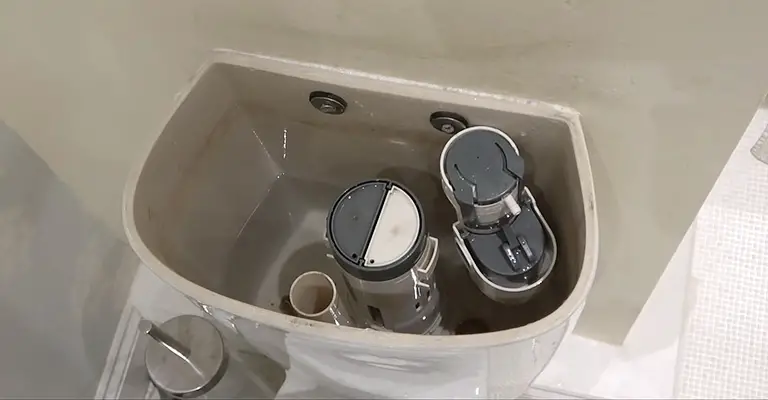Your toilet is a vital fixture in your home, serving as a reliable companion for everyday needs. So, encountering an unexpected issue like an overfilling toilet tank can be frustrating and bewildering.
Picture this: you flush your toilet, and instead of the water reaching its usual level and stopping, it continues to rise perilously close to the rim.
The fear of an impending overflow looms, and you find yourself wondering, “Why is my toilet tank overfilling?”
While this situation may seem perplexing, you are not alone in facing it. Many homeowners have encountered the same predicament, but fear not; there are potential causes and solutions to rectify the issue.
Various factors can contribute to an overfilling toilet tank, from faulty float mechanisms to valve malfunctions.
In this blog post, we will explore the typical culprits behind an overfilling toilet tank and delve into troubleshooting steps to help you regain control over your bathroom’s waterworks.
Stopping Your Overflowing Toilet
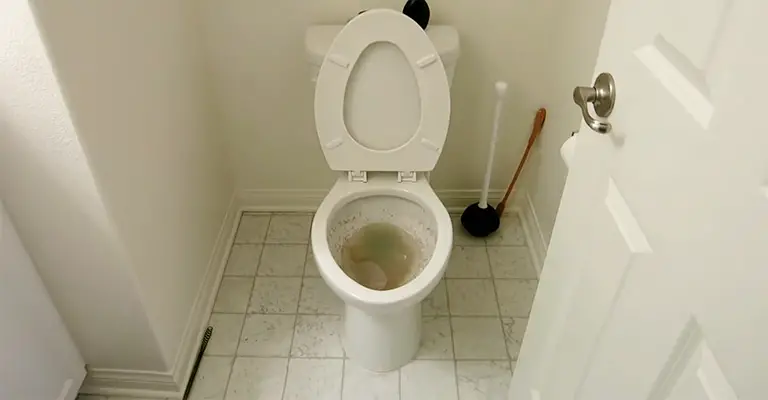
To prevent your toilet from overflowing, turn off the water source first. Doing so can prevent the water from overflowing into your bathroom. To begin, make sure the lid of your toilet tank is off.
You will need to press down on the flapper valve; it will prevent more water from entering the toilet bowl. After that, lift the fill valve to stop the tank from refilling.
Next, you should turn off your toilet’s main water supply. There should be a valve near the toilet’s base where you can find the pipe.
As soon as you turn and tighten the valve, it should turn off the water supply to the toilet. To ensure that the problem doesn’t come back, turn off your home’s main water supply.
Most Common Causes Of Toilet Tank Overfilling
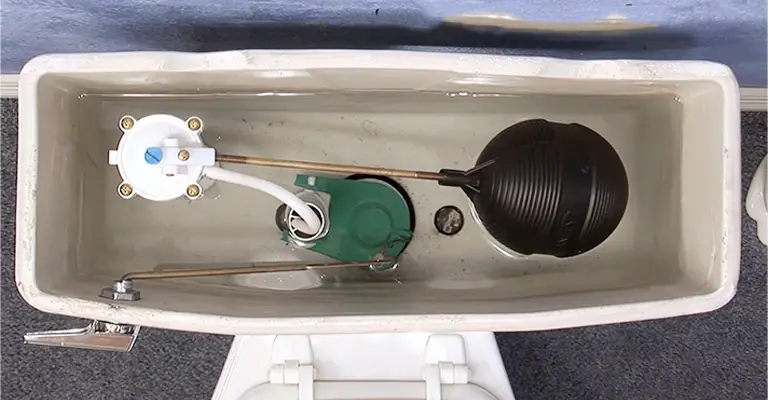
It is well known that toilets are susceptible to plumbing problems. The overfilling of toilet tanks can be one of the most common problems with toilets, despite their importance.
An average toilet consists of two major components: the bowl and the tank. It is usually this that causes plumbing problems in your bathroom.
An overfilled toilet tank can cause many problems, chief among them flooding. After a hard day’s work, a flooded bathroom is the last thing anyone wants.
There is a possibility that you will end up having to pay considerable money for repairs if your bathroom floods.
Besides a blocked waste line, an overflowing toilet tank can waste water too, which is one of the more severe issues that could affect your toilet.
A number of factors usually cause these issues, but many different methods can also solve them. There are some things that you can do yourself, while there are others that you should probably call a professional to resolve.
1. A Faulty Flapper
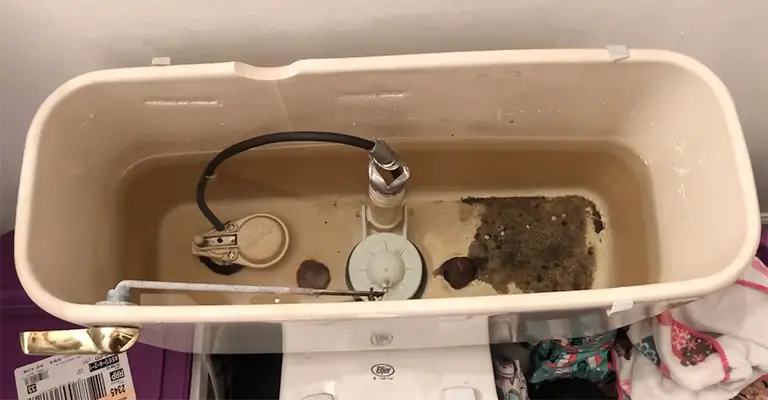
Besides the fill valve, other factors can be responsible for a toilet running constantly. These issues do not necessarily cause overfilling, but they can create a running toilet, even if your fill valve appears to function normally.
As we mentioned earlier, the rubber flapper covers the flush valve, which is the opposite of the fill valve. The water is forced into the bowl to flush the waste away after opening the flush valve.
A faulty rubber flapper may cause water to constantly seep into the bowl, causing it to run continuously.
This is actually what you need to replace in your toilet tank if this is the problem. Due to wear and tear, the structure has probably been compromised over the years. Changing the flapper should fix the problem.
2. A Broken Ball Float
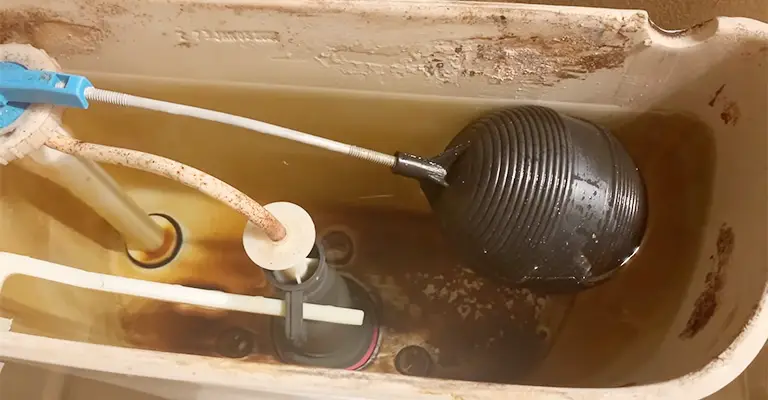
Similarly, this issue has been reported previously. Compared to the old ball floats, the rubber flapper has proven hugely effective in controlling the flushing mechanism. Rubber flappers have replaced ball floats with the introduction of newer toilet models.
Those living in an old house with an older model toilet will likely have ball floats instead of rubber flappers. If this is the case, You will need to replace your rubber flapper or ball float.
However, we recommend replacing the ball float with a rubber flapper instead since flappers are the newer technology and are less likely to break.
3. A Leaky Fill Valve
The spilling of water from the sides of the tank is an easy indicator that your overflow tube is malfunctioning. It is possible, however, that your overflow tube is functioning correctly, and your toilet tank is still overfilling, causing it to run.
When a toilet does not stop running despite not being flushed recently, it is known as a running toilet. The fill valve for refilling the toilet tank has worn down over time and is constantly leaking water into the tank as a result.
Even though your overflow tube is working, excess water won’t spill out the sides of your toilet, and it will constantly run because of the constant cycle of filling and emptying.
You can check your fill valve by turning off the water from your toilet by pulling the lever behind the bowl. Next, flush the toilet to empty the tank of water. Your fill valve will not fill your tank since the water is off.
Take a look at the seals around the fill valve’s edges after completing these steps. You will know your problem when you see cracks or chips in the seal. The fill valve should be replaced to prevent your toilet from filling continuously.
Flooding could be caused by a broken overflow tube coupled with this. It is only safe to replace a fill valve with a professional plumber. By replacing the valve, they won’t have to worry about further damage.
4. A Misaligned Overflow Tube
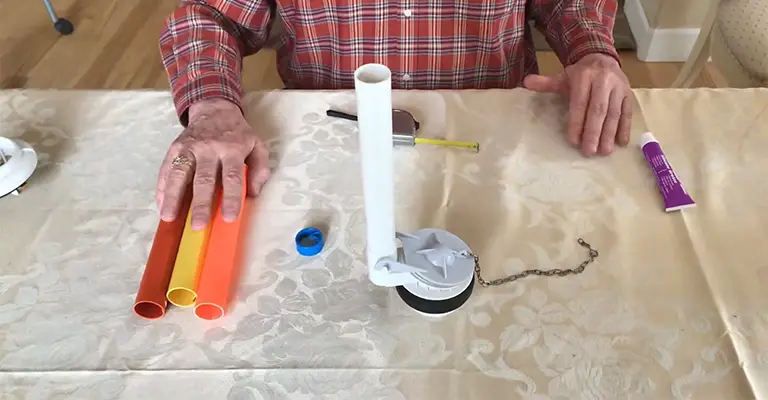
In most toilets, the rubber flapper, which usually covers the flush valve, releases during flushing. Water from the toilet tank is then pushed at high speed into the toilet bowl when this happens.
This process flushes waste from your toilet bowl into the sewer system. Filling the toilet’s tank back up with water after this process completes, connected to your house’s water supply, prepares it for another flush.
If you remove the lid from your toilet tank and look inside, you’ll see a white tube floating in the middle. There is an overflow tube here. This is what keeps your tank from overflowing.
Tubes usually prevent excess water from spilling over the sides of the toilet tank or leaking through the opening where the flushing lever is located by returning the water to the bowl.
For the tube to be able to properly manage excess water, it must be adjusted if it is out of alignment or too high. An overflow tube can be correctly aligned by cutting it with a hacksaw.
The overflow tube can be cut yourself, but if you’re worried about damaging other areas of your tank, you may want to consider hiring professionals.
5. Blocked Vent Pipe
If your toilet clogs more frequently, you may want to investigate a blocked vent pipe. The vent pipe replaces the air pumped into the plumbing system with external air as it passes through the system.
The blocked pipe will prevent your toilet from flushing correctly, causing an overflow. In most cases, an experienced plumber is required to handle this task.
6. A Clogged or Blocked Drain
You can easily spot a blocked drain. There will be a huge mess if water overflows from the bowl instead of the tank as it usually would.
Stopping the overflow requires you to treat the clog. Using a plunger and some elbow grease for simple clogs usually suffices.
7. A Leaky Gasket
Between the toilet bowl and the tank is the gasket, a rubber seal. Also known as the wax ring, the gasket is used to seal the valve. When the gasket wears out, water may leak from the tank into the bowl, eventually resulting in an overflow.
Occasionally, the water can also overflow from the bottom of the toilet if it doesn’t overflow from the bowl. Gaskets on toilets can leak due to various causes, including loose bolts and natural wear and tear.
It’s necessary to replace the gasket to fix this problem. The gasket, however, cannot be seen without removing the toilet itself.
Therefore, you may need to seek assistance from a professional. Leaving it to an expert with the right expertise will ensure you won’t have to worry about moving the toilet.
Final Words
There is no denying that plumbing issues are an inconvenience. However, dealing with an overflowing toilet can be a huge disaster!
Among the most used appliances in our homes are toilets. If yours starts to malfunction, pay attention or contact your professionals immediately. They usually last a long time and don’t cause too much trouble.

